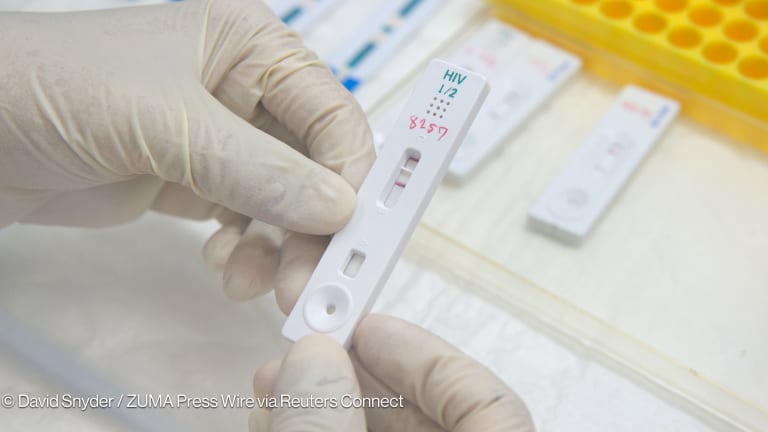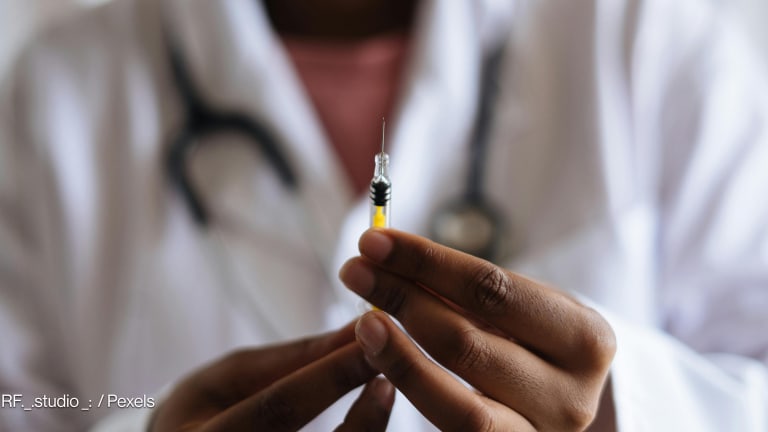
As experts gathered at the International AIDS Conference in Durban, South Africa, last month, there was the overwhelming consensus that a lot more work had to be done if UNAIDS’ ambitious 2020 targets were going to be met.
The 90-90-90 targets, which were released in 2014 and provide a framework towards ending the AIDS epidemic by 2030, call for 90 percent of living with HIV to know their status, 90 percent of all people diagnosed with HIV infection to receive antiretroviral therapy and 90 percent of people on ART to have viral suppression by 2020.
But with only 51 percent of people aware of their status, experts acknowledge that innovations such as point-of-care testing — also known as rapid HIV testing which enables people to be tested and know their status in the same visit — and self-testing, must be scaled-up.
Robert Matiru, director of operations at UNITAID, told conference delegates that while such “innovations” were available, barriers to their uptake and adoption had to be overcome.
“We have critical innovations … but how do we convert [them] into reality? Innovation in itself is not sufficient,” he said. “We need products to be available, to be affordable and to ensure they meet quality standards. We need to generate demand and adoption of those tools in countries and key populations and to support their delivery.”
Improving data utilization
While the tools are there for testing, actually reaching people and knowing where they are, particularly key populations, is crucial moving forwards, experts said. As such, improving data collection is critical.
Dr. Brian Rice, an epidemiologist specializing in HIV measurement and surveillance at the London School of Hygiene and Tropical Medicine, explained that systems routinely collecting longitudinal data such as case-based surveillance can provide disaggregated data that can facilitate time-trend analyses by specific geography and/or population groups to help understand what’s going on in communities.
He added there was a shift to utilizing non-HIV data sources such as demographic and health surveys, census and vital statistics data, as well as a move towards linking data to make existing HIV and non-HIV data sources “speak to one another.”
Rice said that linking data, based on personal identifiers, could be used to remove duplicate records, such as people receiving a positive diagnosis in more than one facility. These de-duplicated data, he said, could be used to describe sex, age, place, behavior and stage of disease of newly diagnosed people.
“Such data can be use to describe a population at risk of being diagnosed with HIV to estimate the number of people living with undiagnosed HIV,” he said. “As such, they may be used to inform where and among whom testing should be focused.”
Bridging the testing gap
Dr. Rachel Baggaley, from the World Health Organization’s HIV department, said that while testing had increased over the past 12 months, key populations — gay men and other men who have sex with men, transgender people, sex workers, people who inject drugs and prisoners — were being left behind.
“We’ve done some of the easy work — getting those who want to be tested, particularly women, but this first 90 target is something that remains a big gap in all regions,” she said, adding that 35 percent of new HIV infections were among key populations.
To expand testing, there had to be a move away from lab-based systems for diagnosis, which she said were complicated, towards more reliance on community health care workers and lay counsellors, said Dr. Dorothy Mbori-Ngacha, senior HIV specialist at UNICEF, in Nigeria.
“Point-of-care testing is easy to use, rapid and requires the lowest levels of health care facilities,” she said. “It will augment systems, reduce turn-around times and reduce the number of times people have to enter the health care system.”
Self-testing scale-up
Recent studies have demonstrated the potential HIV self-testing holds as a discreet and simple way to get people to know their status, particularly among adolescents and key populations, who are often reluctant or unable to be tested for myriad reasons including social and health system barriers.
And given the testing gap, experts say this tool could play an important role in reaching the 2020 goals.
“Self-testing can go a long way to reaching the first 90 goal. We have to get the message out,” said Baggaley, who added that many people were already self-testing informally through the online purchase of tests, or through pharmacies that were not regulated centrally and called for governments to introduce self-testing formally into policies.
Dr. Kimberly Green, from PATH in Vietnam, told Devex it was piloting self-testing programs across several rural and urban areas of the country.
When Vietnam adopted the 90-90-90 goals in 2015, she said, the government was immediately confronted with the fact that there was a gap in diagnosis with data showing that annually, only 30 percent of key populations at-risk of HIV tested conventionally at government sites.
Green said by offering people the opportunity to test at home or at community-based organizations with the help of lay counsellors provided a way to reach those who would otherwise not test.
“If we can answer the question that self-testing is a value add overall, even if there’s a proportion of people who we don’t hear back from … then that will provide information to the ministry of health that it’s worthwhile, that it’s still increasing the uptake of testing and still identifying people who are at risk and who are reporting back,” she said.
Many other countries have shown interest in providing self-testing, said Baggaley, adding that the WHO is in the process of developing guidance on the practice, to be released later this year.
Moving forward, Mbori-Ngacha stressed that countries had to realize lab-based systems were complicated and were hampering efforts to reach the 2020 goals.
“There is unfinished business,” she said. “We have to get products out to scale and optimize point-of-care strategically.”
With potential to change the trajectory of crises, such as famines or the spread of diseases, the innovative use of data will drive a new era for global development. Throughout this monthlong Data Driven discussion, Devex and partners will explore how the data revolution is changing our approach to achieving development outcomes and reshaping the future of our industry. Help us drive the conversation forward by tagging #DataDriven and @devex.
Read more stories from the International AIDS Conference:
► Funding shortfall threatens 'test and treat' for HIV and AIDS
► AIDS funding is in crisis. Who will step up?
► Why we can't treat our way out of the AIDS epidemic
► Durban then and now: Human rights funding in the AIDS response








